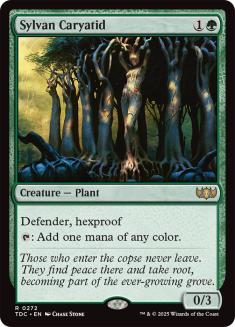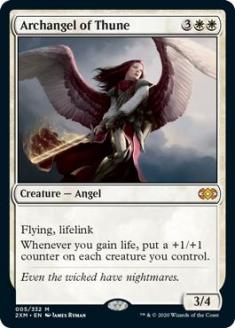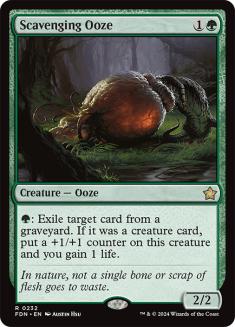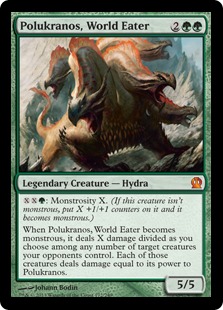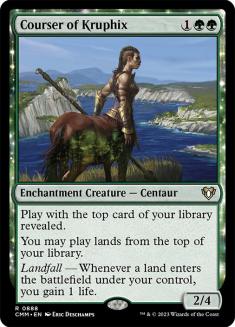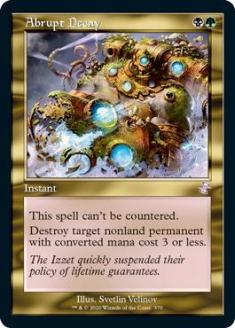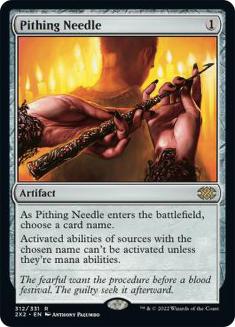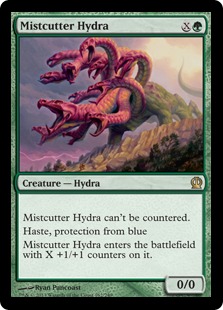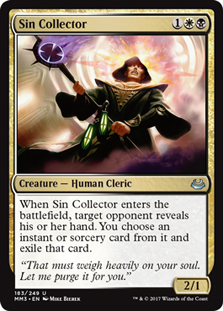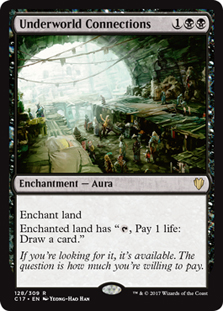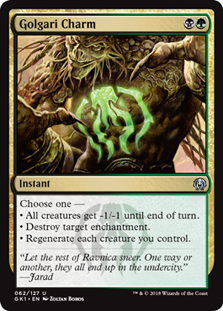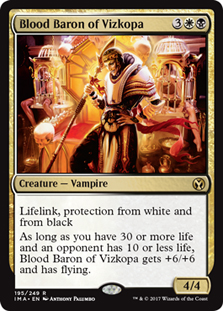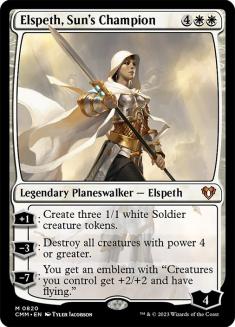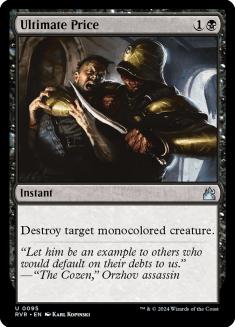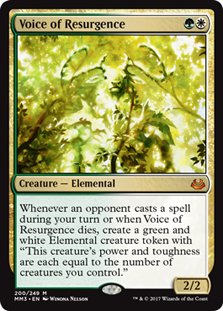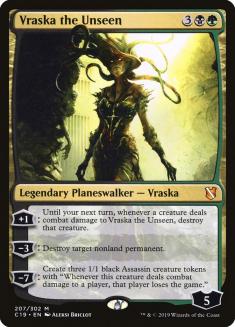The SCG Open Series in Milwaukee along with a bunch of Invitational Qualifiers are coming up this weekend, and I think I might have the deck for you. It’s a deck I came in second with at an IQ a little over a week ago, the deck I would have played if I would have made it out to the Season One Invitational in Charlotte, the deck that Reid Duke just missed Top 8 with by finishing in tenth,, and the same archetype I played at my first individual Pro Tour.
That deck is none other than PT Junk.
The history of PT Junk goes way back to the dawn of time when River Boa, Hunted Wumpus, Duress, Tithe, and Vindicate ruled the game (maybe these cards never ruled the game, but they were in the deck). Junk is a unique archetype that attacks the metagame in a very distinct way. It often preys on control and combo decks due to its efficient discard spells (Duress) and difficult to handle creatures (Mystic Enforcer). It also attacks aggressive decks with cheap removal spells (Swords to Plowshares) and potential board sweepers (Pernicious Deed).
Over the years, the deck hasn’t changed much; sure, the actual cards have changed a fair amount, but the outline of the deck has always stayed the same. The discard spells are updated from Duress to Thoughtseize, the creatures are more powerful with Voice of Resurgence and Courser of Kruphix, and the removal has changed to what is relevant in the format (Abrupt Decay and Hero’s Downfall). PT Junk has been my deck of choice many times, and I’m glad to see that there’s a place for it in the current Standard format.
Before I get into the deck I came in second with at the IQ and the version that I would play tomorrow at a tournament, let’s take a look at PT Junk over the past decade:
Creatures (15)
Lands (22)
Spells (23)
Sideboard

This is the list I played at the Nice Masters back in 2002. The deck played a handful of disruption cards in Duress, Gerrard’s Verdict, Wasteland, and Seal of Cleansing, which at the time one was of the most important cards in the format due to all the Oath of Druids, Illusions of Grandeur, and Recurring Nightmare that were in the field. The deck was also well equipped to handle fast creature decks with Swords to Plowshares and Pernicious Deed, along with a bunch of cards that were just solid against pretty much anything like Powder Keg, Mystic Enforcer, and River Boa.
The next deck is one that many of you might remember: my Grand Prix Philadelphia winning decklist:
Creatures (18)
Lands (23)
Spells (19)
- 1 Sensei's Divining Top
- 1 Duress
- 2 Smother
- 2 Cabal Therapy
- 4 Vindicate
- 4 Pernicious Deed
- 2 Gerrard's Verdict
- 3 Thoughtseize
Sideboard

Here the discard package was a bit more varied, as it featured Cabal Therapy, Duress, Thoughtseize, and Gerrard’s Verdict. This version of PT Junk relied slightly more on coming out of the gates quickly with a turn 3 Loxodon Hierarch or Ravenous Baloth, which allowed the deck to stay with its intended purpose–being strong against both aggressive and controlling strategies.
One of the best parts of playing PT Junk is the ability to sculpt your deck to beat any given matchup in sideboarded games. By adding removal like Damnation and the third or fourth copy of Smother, your matchup against aggressive decks improves drastically. The same can be said about control and combo decks with the addition of Extirpate, Cranial Extraction, or additional Duress.
The current Standard metagame is very interesting. The popular decks are all very different:
U/W Devotion
B/W Midrange
R/W Burn
Mono-Red Aggro
G/R/x Monsters
Mono-Black Devotion
Esper Control
As such, your deck has to be well equipped to handle everything from Firedrinker Satyr to Sphinx’s Revelation. I decided that I wanted to give PT Junk a try since the black, green, and white cards have a lot to offer and the metagame is at a point where having a focused sideboard is incredibly important. After taking second place at the IQ and then tuning it some more with the help of Reid Duke and Chad Kastle, the following list is what I would suggest you play moving forward:
Creatures (19)
- 2 Scavenging Ooze
- 2 Obzedat, Ghost Council
- 3 Voice of Resurgence
- 2 Archangel of Thune
- 2 Polukranos, World Eater
- 4 Sylvan Caryatid
- 4 Courser of Kruphix
Planeswalkers (3)
Lands (21)
Spells (17)

This version of PT Junk is able to have a chance against any matchup you face. At the IQ for example, I faced and defeated Esper Control, Jund Monsters, U/W Devotion, and Naya Hexproof.
Black brings you powerful creatures along with great tools against control decks in Obzedat, Ghost Council; Thoughtseize; and Underworld Connections. Against the more aggressive decks, black provides efficient removal spells in Abrupt Decay and Hero’s Downfall. But if you examine those last two spells, you’ll notice that both of them are also great against the midrange and controlling decks of Standard. Having cards like Devour Flesh, Bile Blight, and Doom Blade are great in some matchups but very poor in others. With this configuration, you have cards that will almost always get the job done.
White brings a different aspect to the deck since most of the cards are solid in all matchups. Archangel of Thune and Elspeth, Sun’s Champion are two of the most powerful cards in Standard, and if either one is not handled immediately, the game will most likely end in your favor very quickly. They shine in aggressive, midrange, and control matchups, as they both do a great deal for the deck. Ignoring those heavy hitters, white also provides nice tools that are very annoying for decks like Mono-Black Devotion and Esper Control in Voice of Resurgence and Sin Collector. Both cards have a lot going for them, as they come down early to pressure the opponent’s life total and stop them from doing things like playing a Jace, Architect of Thought and safely ticking down without repercussion.
Green provides powerful creatures that are excellent against other creature decks. For example, Polukranos, World Eater is a nightmare for any deck that relies on an aggressive creature-based strategy to win. It also happens to be one of your best tools against Mono-Blue Devotion, the deck that just won the last Standard Open, because of its ability to control Master of Waves. Green also brings life gain in the form of Courser of Kruphix and Scavenging Ooze. Both threats are something that your opponent will need to deal with; otherwise, they will get out of control and turn the tide in your favor. Finally, Mistcutter Hydra is a powerhouse against a bevy of decks and has been a great sideboard option in Standard since its arrival.
Now that you have a feel for what the deck is all about, let’s move on to the matchups and how to sideboard!
Esper Control
Game 1 will sometimes be difficult, but you have a lot going for you. The best way to approach this matchup is to make sure you time Thoughtseize correctly. It’s best to hold them until the midgame to make sure you have a higher chance of hitting a copy of Sphinx’s Revelation. You also want to make sure to resolve Underworld Connections and not have it get countered by a Syncopate or Dissolve. As long as Underworld Connections hits play, you should be in fine shape because Esper Control relies on Detention Sphere and we have four copies of Abrupt Decay to blow up that plan.
Out:
In:
Cutting Sylvan Caryatid might seem risky, but you don’t need to ramp against the Esper deck. Your mana should be fine with the additional copies of Underworld Connections. The other creatures you’re cutting are good but don’t really shine in the matchup. You instead bring in creatures that are much more annoying for the opponent to try to handle. The final change is swapping a single Abrupt Decay for a copy of Golgari Charm since the Charm will do exactly what Decay does a high percentage of the time (killing a Detention Sphere) but has some added upside due to its versatility.
Mono-Black Devotion
This is another matchup you’re happy to play against. The plan should be to have Voice of Resurgence and Sylvan Caryatid handle Devour Flesh while Thoughtseize clears the way for a powerful threat. You also have a way to stop their Underworld Connections, but they have no way to stop yours once it hits play. Game 1 can be fairly close, but you definitely improve after board. You’re not too concerned with any of their threats since you have many answers to a lot of their cards (except for Erebos, God of the Dead, which is annoying for you).
Out:
In:
The deck becomes a bit cleaner after sideboard with more spells you want in the matchup. You do lose some form of mana with the removal of Sylvan Caryatid and a few Courser of Kruphix, but you’re increasing your Underworld Connections count to four to make up for that. Sideboarded games typically going longer than game 1s do. The game plan after sideboard is the same—stop their Underworld Connections, stick yours, and make sure you don’t randomly lose to Desecration Demon or Gray Merchant of Asphodel.
U/W Devotion
Here you pretty much become the control deck, as your goal is to try to stop everything relevant they do. Take their threats with discard, stop their Nightveil Specter from ever hitting you, and make sure you have something to stop Master of Waves. Your deck is pretty well set up for this matchup since Archangel of Thune and Polukranos, World Eater are powerhouses against U/W Devotion, so make sure you draw some of those!
Out:
In:
You definitely get a nice improvement here after board with Ultimate Price and Mistcutter Hydra. The Golgari Charm is nice as well since you can sometimes hit multiple small creatures with it or destroy a Domestication that your opponent is likely to board in. Taking out the aggro cards is fairly academic here since you’re the control deck in this matchup.
R/W Burn & Mono-Red Aggro
You may think that these decks are easy to play against, but they’re actually rather difficult since the smallest mistake can cost you the game. Planning out your turns and figuring out if paying two life for a shock land is worth it or not is very important. You have some fantastic cards in the matchup, but there are also some pretty bad ones. After board your matchup becomes better since you can take out the bad cards and bring in more of the good ones.
However, red decks can always just steal games, so losing the first one makes it a lot tougher on you. Just remember you have the tools to win this matchup and take your time when planning out your game. Sideboarding will vary depending on what version you are playing against, and if you think they might board out or in creatures, so this will just be a rough sketch.
Out:
In:
PT Junk is a well-rounded choice that will give you a chance against anything in the field. I suggest this deck if you are tired of Esper Control and Mono-Black Devotion and like playing midrange decks that attack the metagame well. The deck has a lot of play to it, so be sure to practice with it as much as you can before sleeving it up for a tournament.

